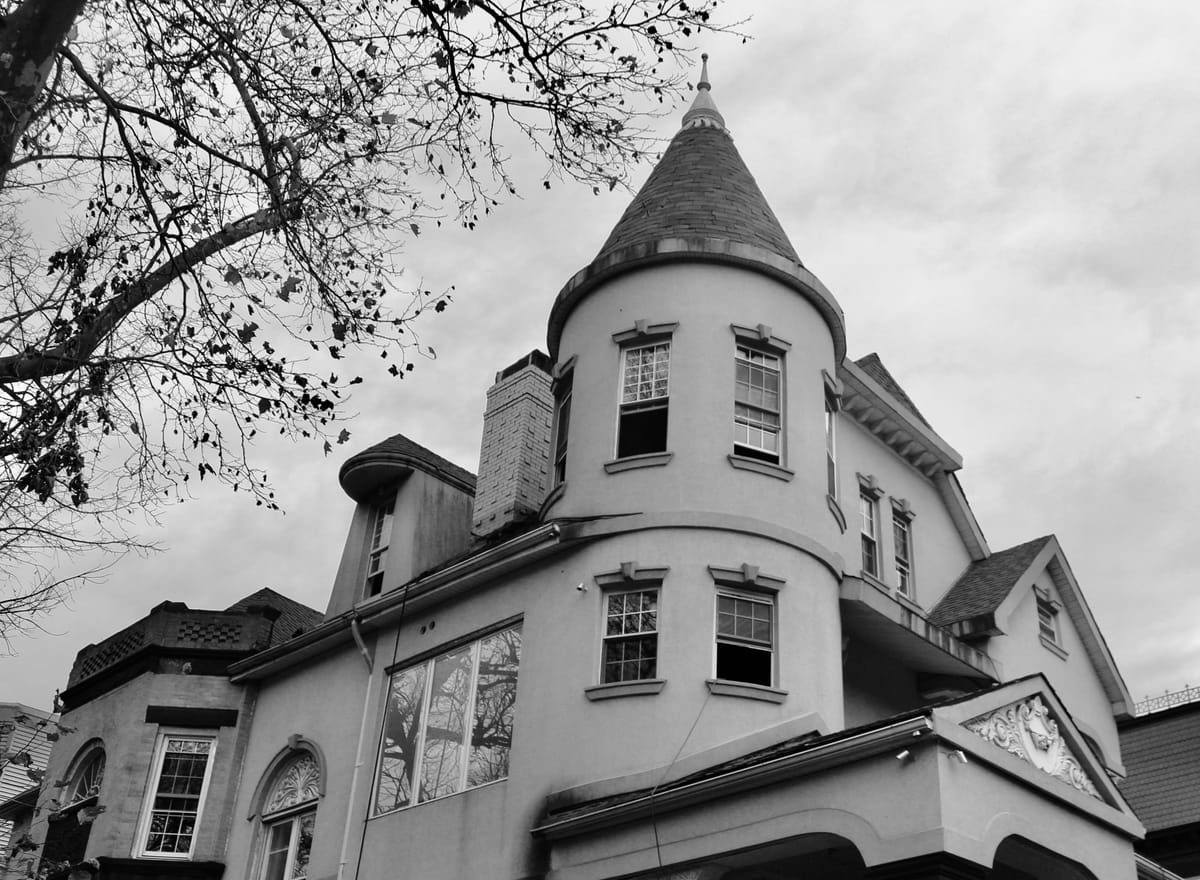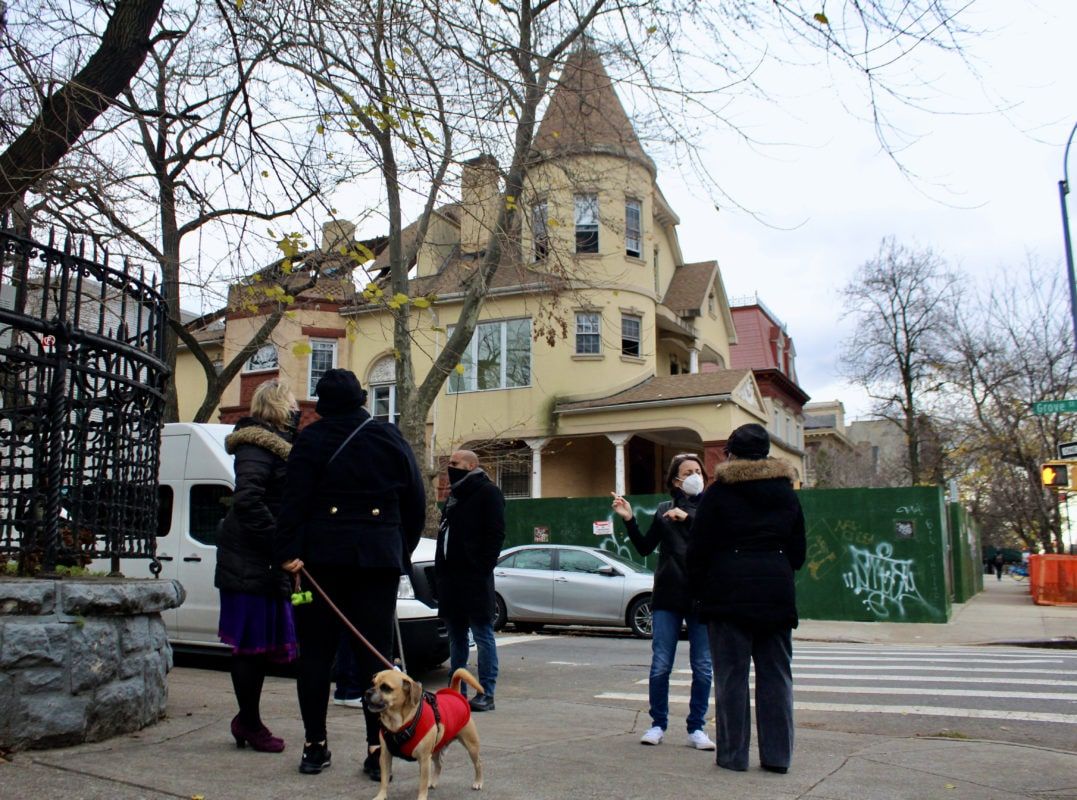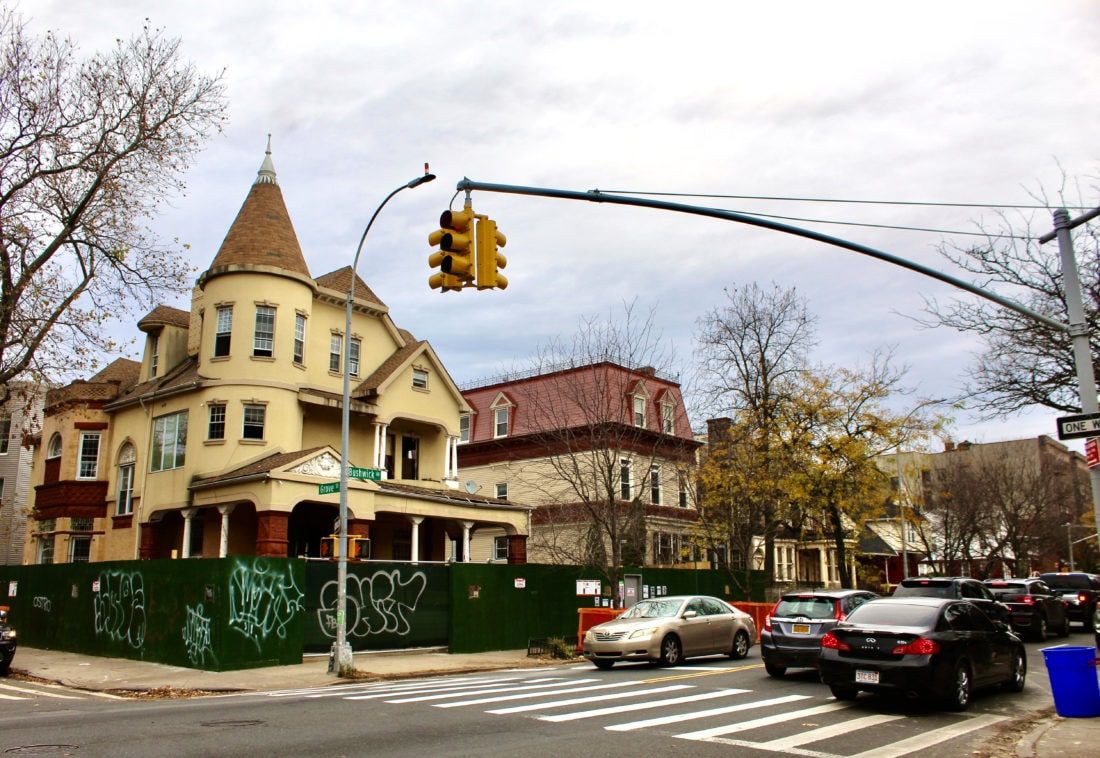Mansion Demolition Reopens Debate Over Landmarking in Bushwick


Carlotta Williams, 68, looked across Bushwick Avenue where green construction boards surround the Charles Lindemann House, a historic mansion with a gaping hole in its roof. Williams texted her daughter, who grew up dreaming of buying the mansion, to tell her it was being torn down.
The demolition began in late November for the 1890s-vintage mansion at 1001 Bushwick Ave. and is still underway. Williams attended a rally in early December following virtual meetings and calls to the community board from neighbors who want to designate the mansion a landmark.

The demolition of the Lindemann House has shown how vulnerable Bushwick is to development, laying bare tensions between long-time residents and affluent newcomers. For many residents, this fight is about more than just preserving beautiful facades and cornices –– it’s about preserving affordable housing and the neighborhood’s cultural identity. But not everyone agrees that historic preservation is the right tool for preventing displacement.
Williams has lived in Bushwick for 32 years and has watched the neighborhood transform. Luxury apartment buildings, like the skeletal structure across the street from the Lindemann House, have cropped up. The structure is several stories higher than its neighbors and blocks sunlight from reaching her backyard. “When I first moved here, I was able to grow tomatoes. I can’t grow anything now because nothing seems to bloom,” she said.
Like many new developments in Bushwick, the proposed seven-story residential building set to replace the Lindemann House is unwelcome by community members and local elected officials.
“We’re not happy about housing that has no intention for our people to live in,” said Erik Dilan, assembly member for the 54th district which encompasses Bushwick. “We have a diverse and large community of all walks of life and races and to build housing for people that are not from the community is not what we’re looking for.”
The development comes in the wake of a breakdown in rezoning negotiations between the Bushwick community and the city. The Bushwick Community Plan, unveiled in 2018 after four years of work, was initiated by Councilmembers Antonio Reynoso and Rafael Espinal and formulated with extensive input from local nonprofits and community members. In addition to rezoning recommendations, the plan nominated three historic districts and six individual landmarks. Most of Bushwick’s current residential zoning has no height restrictions, which according to the Bushwick Community Plan, “incentivizes demolition of smaller historic buildings.”
When the city rejected the plan in January of this year, proposals for both rezoning and historic preservation stalled. “Everyone knew that if we waited and didn’t emphasize the need to push preservation as a tool, then what we’re seeing now could happen,” said Celeste Leon, the district manager of Bushwick’s community board.
“Preservation is really just a tool in addition to zoning,” said Leon. “We are trying to use these tools to protect and preserve Bushwick and make sure that it’s one that is reflective of our history and culture far into the future.”
The map above details the historic districts designated in surrounding areas over the past few decades by the Landmarks Preservation Commission, the city agency in charge of landmark and historic district designations.

Bushwick was studied by the LPC in 1971 for historic districts, but the community has not prioritized it until recently, leaving it with only a handful of individual landmarks. According to LPC spokesperson Zodet Negrón, agency reviews of Bushwick Avenue “found that it lacks the consistency and intact historic character necessary for it to merit historic district designation.”
Once a building is landmarked, alterations and repairs can be expensive and time-consuming. The process can be especially onerous for working-class owners in a community that is largely people of color, said Robert Camacho, the chair of Bushwick’s community board.
“You know Latinos and Blacks, we have a home like that, and now we can’t do things we think we can do because it’s landmarked,” said Camacho. “When the city comes to these places and you’re not up to par, then you’re creating a more hostile environment.”
Even if Bushwick designated historic districts, Sanford Ikeda, a professor of economics at Purchase College who has written about the impacts of historic district designation, said it may not prevent cultural change and displacement the way the community hopes. “Preserving the way it looks is like taxidermy,” he said. “You take something that was alive and stuff it and it stays that way forever –– but the nature of that thing changes.”

For the partially demolished Lindemann House, the chances of attaining landmark status are slim. Though a neighbor submitted a request for evaluation, the LPC said previous studies found it “did not rise to the level of an individual landmark due to significant alterations to its facade.” The LPC also said the building can still be fully demolished even if it were designated.
Bushwick’s community board and elected officials are hoping the LPC and the developer will reconsider. They are also hoping the next mayor will revisit the Bushwick Community Plan. Without rezoning and preservation, much of Bushwick remains ripe for development.
“It’s a stepping stone for other developers to take what they want,” said Ramón Pebenito, district policy and organizing director for state Sen. Julia Salazar. “At what point do we draw the line and actually listen to the people?”
LANDMARKING PROCESS
St

ep 1: Submit a Request for Evaluation (RFE). The two-page form asks for the proposed landmark’s address, a statement of significance, and current photos.

Step 2: LPC review and research. If it finds merit, the LPC will conduct a study of the building or district’s historical significance.

Step 3: Calendaring. If designation is feasible, the LPC will schedule a hearing where community members and advocates can make their case.

Step 4: Public hearing. The LPC hears arguments from stakeholders and reviews research before voting.

Step 5: Official LPC vote. If the LPC votes in favor, then the site or building will be granted protection under the Landmarks Law.

Step 6: City Planning Commission (CPC) review. The CPC makes a report to the City Council about the impact of designation on development.

Step 7: City Council review. City Council reviews the report and votes to modify, reject, or affirm the designation.



